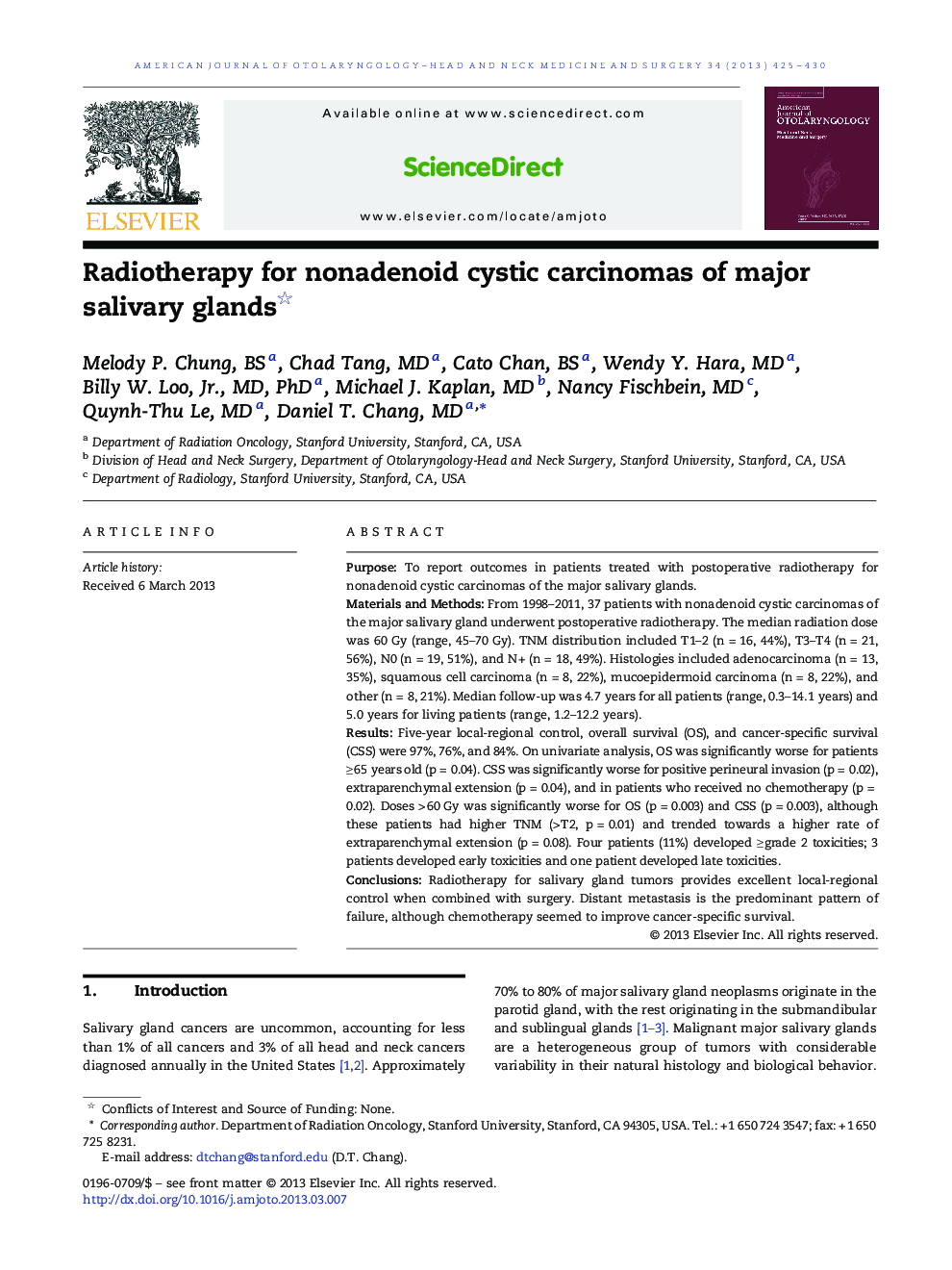| Article ID | Journal | Published Year | Pages | File Type |
|---|---|---|---|---|
| 4103133 | American Journal of Otolaryngology | 2013 | 6 Pages |
PurposeTo report outcomes in patients treated with postoperative radiotherapy for nonadenoid cystic carcinomas of the major salivary glands.Materials and MethodsFrom 1998–2011, 37 patients with nonadenoid cystic carcinomas of the major salivary gland underwent postoperative radiotherapy. The median radiation dose was 60 Gy (range, 45–70 Gy). TNM distribution included T1–2 (n = 16, 44%), T3–T4 (n = 21, 56%), N0 (n = 19, 51%), and N + (n = 18, 49%). Histologies included adenocarcinoma (n = 13, 35%), squamous cell carcinoma (n = 8, 22%), mucoepidermoid carcinoma (n = 8, 22%), and other (n = 8, 21%). Median follow-up was 4.7 years for all patients (range, 0.3–14.1 years) and 5.0 years for living patients (range, 1.2–12.2 years).ResultsFive-year local-regional control, overall survival (OS), and cancer-specific survival (CSS) were 97%, 76%, and 84%. On univariate analysis, OS was significantly worse for patients ≥ 65 years old (p = 0.04). CSS was significantly worse for positive perineural invasion (p = 0.02), extraparenchymal extension (p = 0.04), and in patients who received no chemotherapy (p = 0.02). Doses > 60 Gy was significantly worse for OS (p = 0.003) and CSS (p = 0.003), although these patients had higher TNM (> T2, p = 0.01) and trended towards a higher rate of extraparenchymal extension (p = 0.08). Four patients (11%) developed ≥ grade 2 toxicities; 3 patients developed early toxicities and one patient developed late toxicities.ConclusionsRadiotherapy for salivary gland tumors provides excellent local-regional control when combined with surgery. Distant metastasis is the predominant pattern of failure, although chemotherapy seemed to improve cancer-specific survival.
